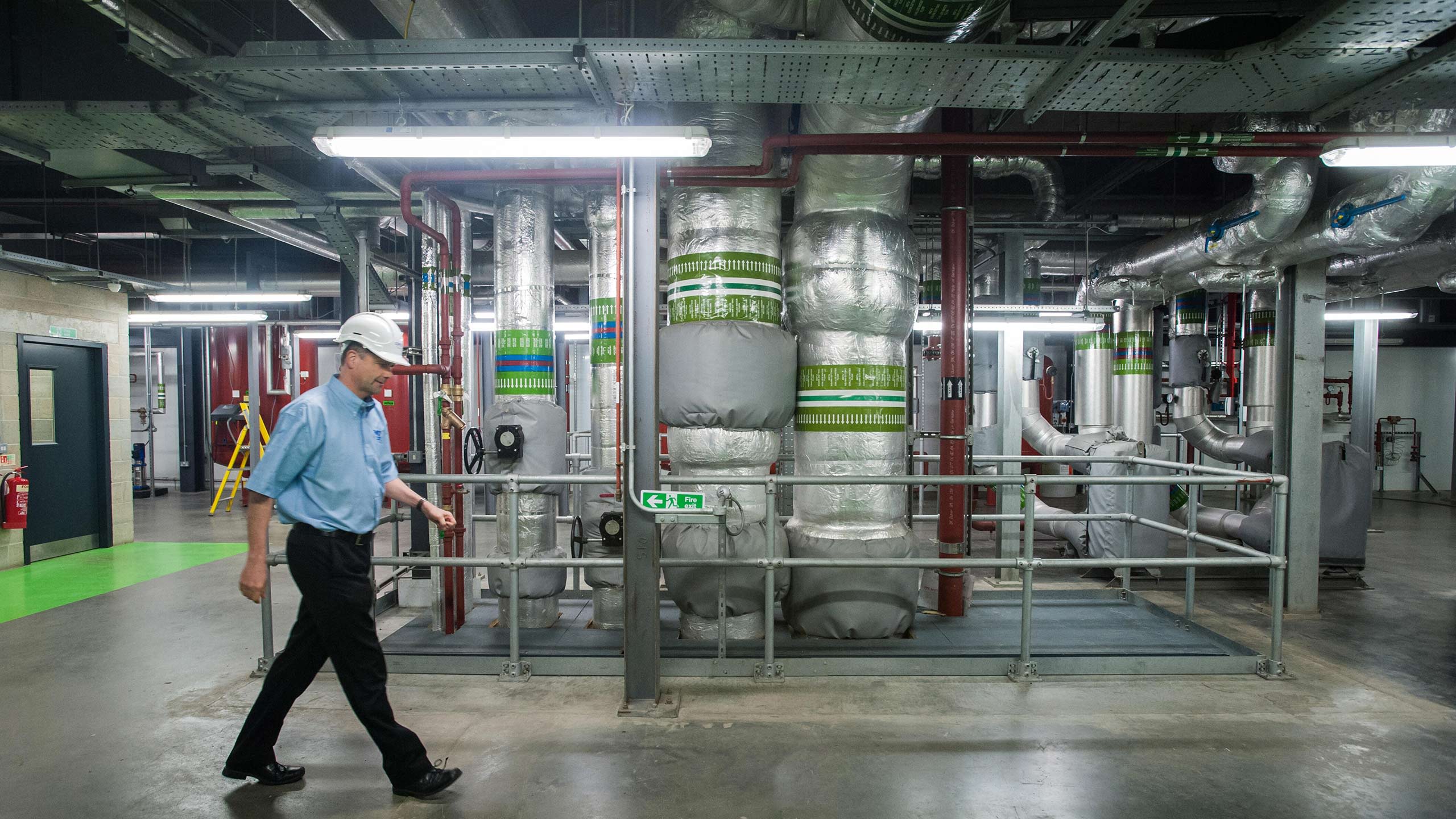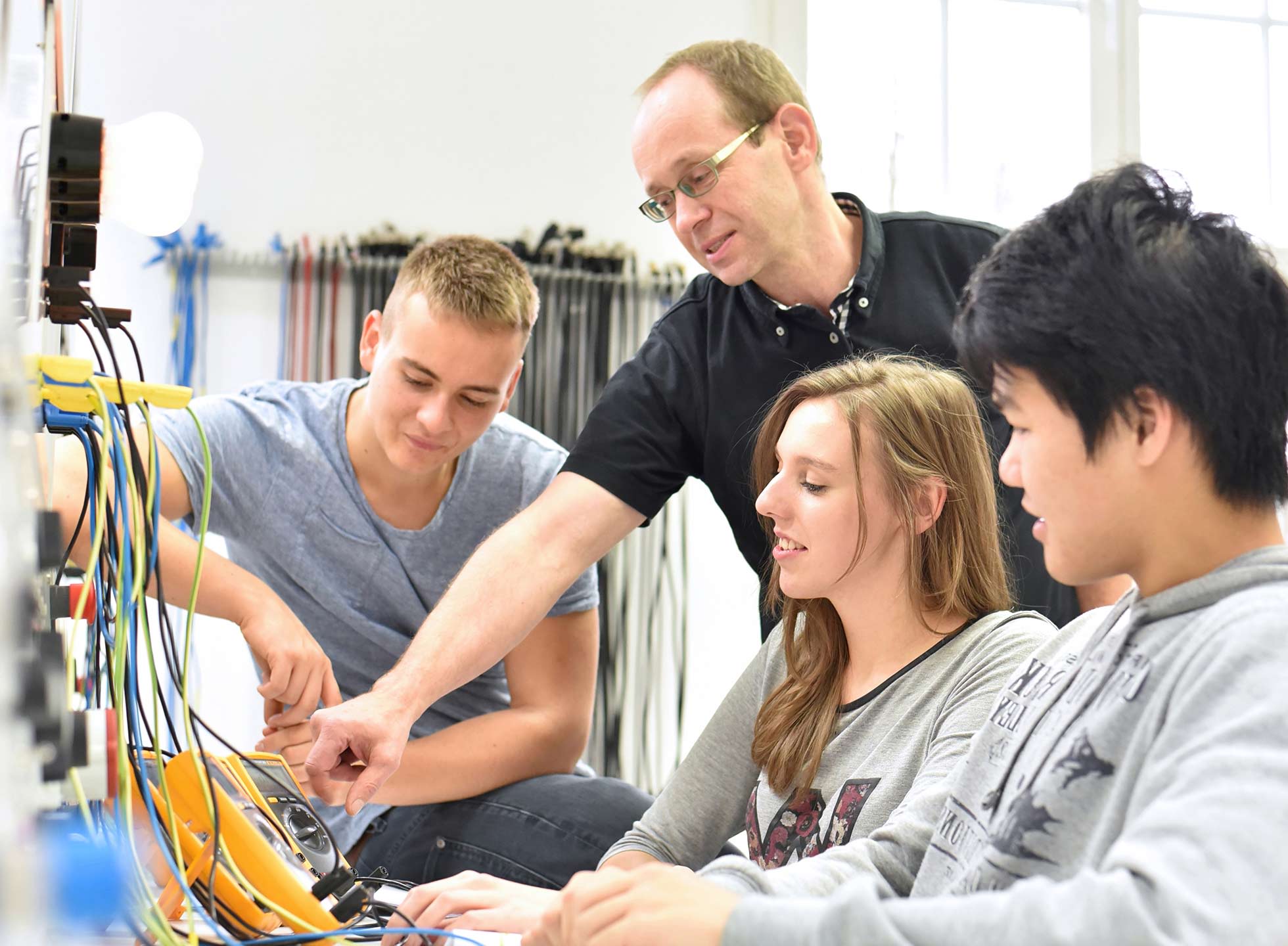Harnessing Sustainability in U.S. Higher Ed
Compared with European universities, U.S. schools have greater opportunities to reduce their environmental impact, but they might need to focus on the economic case to gain support for sustainability initiatives.
By Dr. Michael Webber, John J. McKetta Centennial Energy Chair, The University of Texas at Austin

Across both Europe and North America, universities conduct cutting-edge research in their quest to prepare students for their futures while expanding the human knowledge base. These schools’ core missions of education and scholarly research are similar, and sustainability is a topic with growing importance on both continents. However, when it comes to integrating sustainability into campus operations, European institutions differ significantly from those in the United States.
In European universities, the science of climate change is generally accepted without debate. Like the societies surrounding them, these institutions have spent decades investing in conservation improvements. Most of the low-hanging fruit was harvested long ago.
In the United States, by contrast, although climate scientists are often leading researchers in their field, the broader culture includes a large population of climate skeptics. As a result, university administrators who promote sustainability initiatives often face pushback on the value of those projects and thus face different obstacles to implementing sustainable solutions.
Even so, U.S. institutes of higher learning have a huge opportunity to improve energy efficiency, harness renewable power generation, and modernize their utility infrastructure — perhaps even more opportunity than their European peers.
U.S. Replete with Low-hanging Sustainability Fruit
Consider the differences between universities in the two regions. U.S. campuses tend to be simultaneously more sprawling and more self-contained than their European peers. Many European institutions are located in urban centers, their buildings interspersed with offices, residences, or shops unrelated to the university. Because they are not on standalone campuses, each building relies on local utility providers for power, water, and other services.
Some U.S. schools follow the European model, but many others own their own large piece of land with distinct boundaries. This means the university is fairly isolated from the surrounding community. Campuses contain classrooms, research labs, residence halls, and even sports facilities but are often delineated from the rest of the community by a wall, hedgerow, or other line of visual demarcation.
This model of a fully separated campus may reduce the feeling among students, faculty, and staff that they are closely connected to a wider world. At the same time, though, it enables the university to manage its own infrastructure. Many U.S. campuses are serviced by internal utility functions, and district heating and cooling systems are common. Thus, these universities have substantial control over where their energy is generated and how it is distributed. University administrators may lack Europe’s unified political and community support for climate action, but if they do decide to act on efficiency or sustainability initiatives, they can do so unilaterally. Further, schools that have substantial land holdings may have room to install their own renewable-energy generation and energy-storage equipment on site.
When U.S. universities’ utility systems were built decades ago, sustainability was not top-of-mind for decision-makers. Now, many U.S. universities have an opportunity to pluck some low-hanging sustainability fruit that was left behind.

The Economic Argument May Win the Sustainability Debate
It is difficult for U.S. university administrators to ignore the political landscape within which their campuses operate. Leaders of public universities in Texas, for example, report up to Governor Greg Abbott, who is openly critical of climate science. In some cases, that chain of command may dampen administrators’ eagerness to take bold action with the explicit goal of addressing climate change.
Schools in such a situation can instead focus on the economic benefits that an environmental initiative would bring, using the cost savings as a way to get to the same solution that sustainability prioritization would offer. Though a minority of universities have the wherewithal to manage that process themselves internally, an increasingly common approach that some U.S. universities have pursued is a public-private partnership. A P3 agreement can enable a university to minimize or avoid exposure to operational risks, while also reducing consumption of non-sustainable energy resources in a way that yields environmental benefits and cost savings. Administrators can make the case for such a partnership using economic arguments instead of philosophical or scientific arguments.
Outside partners bring a few desirable attributes, the most important of which is the expertise that is brought to bear on the problem of eliminating waste and reducing a university’s carbon footprint across several dimensions. On-campus networks for district heating and cooling, or other energy or water distribution systems, are usually the underlying infrastructure that props up the whole system. Expanding or upgrading those systems, together with integrating technologies such as equipment automation, efficient lighting fixtures, or carbon-neutral energy generation solutions, presents significant opportunities for improvement. And because many universities cannot access various tax credits, outside partnerships with entities that can get tax credits help the university negotiate favorable power purchase agreements (PPAs) that meet its performance needs.
I have seen from my own experience how outside partners can do more than just run the on-site infrastructure. They can also support research initiatives, hire student interns, serve as judges for poster competitions, or support direct instruction with guest lectures.
Universities are uniquely positioned to implement agreements with a 30- to 50-year time horizon, which allow for a more expansive vision for reaching net zero. This scale and timing make sense for many universities’ physical size and planning cycle. Homeowners might plan upgrades to their properties based on an expectation that they will reside there for the next 15 to 20 years. Auto owners might expect their car to have a useful life of 10 years or so. But for universities, a capital planning cycle of several decades is entirely reasonable.
The good news from such a long planning horizon is that cost savings which are notable on an annual basis become enormous across decades. Moreover, improving energy efficiency also reduces a university’s exposure to volatility in the price of power or fuels, which is a significant and unpredictable risk over an extended time horizon. A 30-year (or longer) public-private partnership can lock in energy savings for the long term.

Living Laboratories Can Leverage the Long View
Taking such a long view is a luxury that universities have over almost any other type of organization. Administrators who leverage this perspective can use cost savings projections to build public and political support for initiatives that also reduce the university’s carbon footprint even if greenhouse gas emissions are not a priority for local political leaders.
It’s also worth noting that different arguments make more sense for different audiences. The economic argument may work for promoting sustainability projects to certain stakeholders, but students and faculty may want to hear about the environmental impact of these initiatives. A partnership that supports efficiency and sustainability improvements can build the university’s credibility as a leader in the movement toward carbon neutrality, which will help recruit and retain students and faculty. If outside partners are involved, they also benefit because in the process of helping the university pursue its cost, reliability, and climate goals, they get to develop a recruiting pipeline of talented students.
In my opinion, in the long view, the economic answers and the environmental answers converge. The same factors that move an organization toward carbon neutrality also save money, because creating a negative environmental impact is costly over the long term. Some people may see a short-term tension between economics and sustainability, but ultimately, if we do not take care of the external environment, we are setting ourselves up for economic failure in the future.
U.S. universities that manage their own self-contained utility systems need to start taking advantage of that utility independence to pursue sustainability goals. These institutions have a unique opportunity to serve as living laboratories. They have thousands of resident students, as well as thousands of faculty and staff members who come to campus every day, and many of these individuals are inclined to experiment. That puts the universities in a perfect position to test the impact of climate solutions on both the environment and the schools’ cash flows.
Climate science may face more questioning and pushback in the United States than in Europe, but overall, U.S. universities may be better situated to make a real difference in the global transition to carbon-neutral energy production.

Is your campus interested in achieving its sustainability goals?
Reach out and learn more.
About the Author

Dr. Michael E. Webber is the John J. McKetta Centennial Energy Chair in the Department of Mechanical Engineering at The University of Texas at Austin and CTO of Energy Impact Partners, a $3 billion cleantech venture fund. From September 2018 to August 2021, Webber was based in Paris, France where he served as the Chief Science and Technology Officer at ENGIE, a global energy & infrastructure services company with 170,000 employees worldwide. Webber’s expertise spans research and education at the convergence of engineering, policy, and commercialization on topics related to innovation, energy, and the environment.
This custom content is sponsored by ENGIE North America and developed by Inside Higher Ed's sponsored content team. The editorial staff of Inside Higher Ed had no role in its creation.


